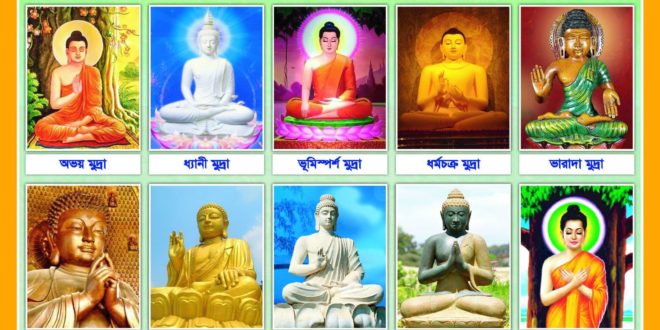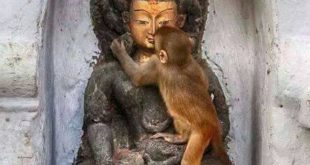“Samma Samadhi” (Right Concentration) which follows Buddha’s “Noble Eightfold Path” .
Siddharth went to Alara Kalama, who told him to focus on his breath in order to get rid of Feelings(“sphere or dimension of nothingness (ākiñcaññāyatana)”), achieved Alara Kalama level in 2 months and realize everything is fine but on coming to ordinary state, Negative & positive Feelings again came to him. So for further he then went to Uddaka Ramaputta and learned ‘dimension of neither perception nor non-perception’, and received the Uddaka level and understood both meditations are only mental stillness & quiet and do not uproot the causes of suffering. The ‘dimension of neither perception nor non-perception’ is very close to unconsciousness. They can only bring temporary peace, which is why the Buddha rejected them. They are not freedom. The Buddha discovered true freedom is having no craving, no attachment and no self. When he say emptiness which means “No self’. The Mahasaccaka Sutta, Majjhima Nikaya 36. According to this story, he learned two kinds of meditation, which did not lead to enlightenment. He then underwent harsh ascetic practices with which he eventually also became disillusioned.
That is why one will see although the “Dimension of Nothingness” and the “Dimension of Neither Perception nor Non-Perception” are included in the list of nine jhānas taught by the Buddha but they are not included in the Noble Eightfold Path. Noble Path number eight is “Samma Samadhi” (Right Concentration), and only the first four Jhanas are considered “Right Concentration”. If he takes a disciple through all the jhānas, the emphasis is on the “Cessation of Feelings and Perceptions” rather than stopping short at the “Dimension of Neither Perception nor Non-Perception”.
Nine Jhanas described in Tripitaka are as below: The practice of dhyana is aided by anapanasati, mindfulness of breathing. Each jhāna is characterised by a set of qualities which are present in that jhana.
1st four Jhanas based on Rupa refers to the material realm are as below:
• First dhyāna: the first dhyana can be entered when one is secluded from sensuality and unskillful qualities, due to withdrawal and right effort. There is pīti (“rapture”) and non-sensual sukha (“pleasure”) as the result of seclusion, while vitarka-vicara (“discursive thought”) continues;
• Second dhyana: there is pīti (“rapture”) and non-sensual sukha (“pleasure”) as the result of concentration (samadhi-ji, “born of samadhi”]; ekaggata (unification of awareness) free from vitarka-vicara (“discursive thought”); sampasadana (“inner tranquility”),
• Third dhyana: upekkhā (equanimous; “affective detachment”, mindful, and alert, and senses pleasure with the body;
• Fourth dhyana: upekkhāsatipārisuddhi (purity of equanimity and mindfulness); neither-pleasure-nor-pain. Traditionally, the fourth jhāna is seen as the beginning of attaining psychic powers (abhijñā)
The 2nd four jhānas are based on arupa refers to the realm non-material realm are as below:
• fifth jhāna: infinite space (ākāsānañcāyatana),
• sixth jhāna: infinite consciousness (viññāṇañcāyatana),
• seventh jhāna: infinite nothingness (ākiñcaññāyatana),
• eighth jhāna: neither perception nor non-perception (nevasaññānāsaññāyatana).
Nirodha-Samapatti or ninth jhāna: Beyond the dimension of neither perception nor non-perception lies a state called Nirodha Samapatti, the “cessation of perception, feelings and consciousness”
If he takes a disciple through all the jhānas, the emphasis is on the “Cessation of Feelings and Perceptions” rather than stopping short at the “Dimension of Neither Perception nor Non Perception”.
Please notes in Facebook we can’t write too long and so some body interested more please inbox me and in future hope to write 2nd part of this if got requests.
 NEWS.NIRBANKAMI.COM NEWS.NIRBANKAMI.COM
NEWS.NIRBANKAMI.COM NEWS.NIRBANKAMI.COM


